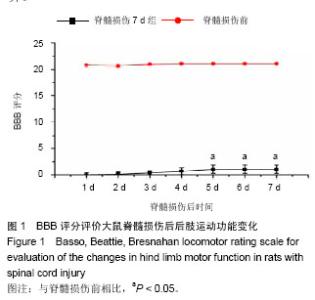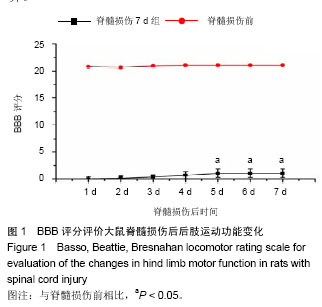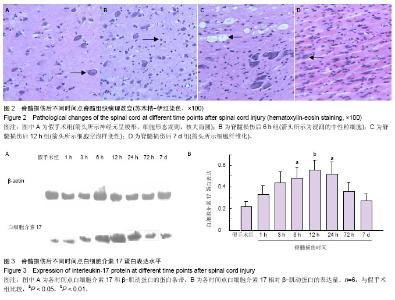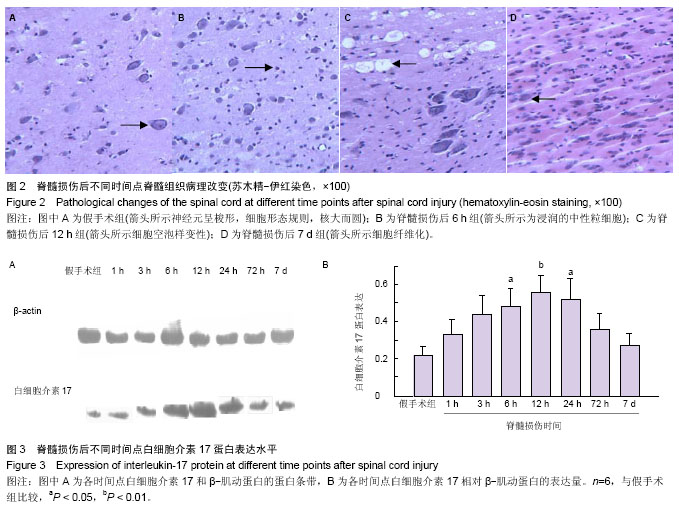| [1] Chen A, Springer JE.Neuroproteomic methods in spinal cord injury.Methods Mol Biol. 2009;566:57-67.
[2] Dumont RJ, Okonkwo DO, Verma S, et al. Acute spinal cord injury,part I:pathophysiologic mechanisms.Clin Neuropharmacol. 2001;24(5): 254-64.
[3] Alexander JK, Popovich PG. Neuroinflammation in spinal cord injury: therapeutic targets for neuroprotection and regeneration. Prog Brain Res. 2009;175:125-137.
[4] Oyihbo CA. Secondary injury mechanisms in traumatic spinal cord injury: a nugget of this multiply cascade. Act Neurobiol Exp.易2011;71(2):281-299.
[5] Tang XN, Yenari MA. Hypothermia as a cytoprotective strategy in ischemic tissue injury. Ageing Res Rev. 2010;9(1):61-68.
[6] Sinha AC, Cheung AT. Spinal cord protection and thoracic aortic surgery.Curr Opin Anaesthesiol. 2010;23(1):95-102.
[7] Hartupee J, Liu C, Novotny M, et al. IL-17 enhances chemokine gene expression through mRNA stabilization. J Immunol. 2007;179:4135-4141.
[8] Tzartos MA, Friese MJ, Craner MJ, et al. Interleukin-17 production in central nervous system-infiltrating T cells and glial cells is associated with active disease in multiple sclerosis. Pathol. 2008;172:146-155.
[9] Roussel L, Houle F, Chan C, et al. IL-17 promotes p38MAPK-dependent endothelial activation enhancing neutrophil recruitment to sites of inflammation.J Immunol. 2010;184(8):4531-4537.
[10] Meyer DM, Jesson MI, Li X, et al. Anti-inflammatory activity and neutrophil reductions mediated by the JAK1/JAK3 inhibitor ,CP-690 ,550 , in rat adjuvant-induced arthritis.J Inflamm (Lond). 2010;11(7):41-46.
[11] van den Berg WB, Miossec P. IL-17 as a future therapeutic target for rheumatoid arthritis.Nat Rev Rheumatol. 2009; 5(10):549-553.
[12] Fletcher JM, Lalor SJ, Sweeney CM, et al. T cells in multiple sclerosis and experimental autoimmune encephalomyelitis. Clin ExpImmunol. 2010;162(1):1-11.
[13] Huang F, Kao CY, Wachi S, et al. Requirement for both JAK-mediated PI3K signaling and ACT1/TRAF6/TAK1 - dependent NF-kappaB activation by IL-17A in enhancing cytokine expression in human airway epithelial cells. J Immunol. 2007;179(10): 6504-6513.
[14] Hill F, Kim CF, Gorrie CA,et al. Interleukin-17 deficiency improves locomotor recovery and tissue sparing after spinal cord contusion injury in mice.Neurosci Lett. 2011;487(3): 363-367.
[15] Ho AW, Gaffen SL.IL-17RC: a partner in IL-17 signaling and beyond.Semin Immunopathol. 2010;32(1):33-42.
[16] Miossec P, Kolls JK. Targeting IL-17 and TH17 cells in chronic inflammation. 2012,11(10):763-776. |



